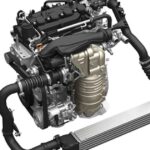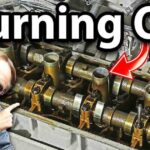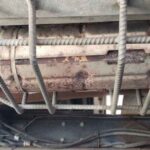Cars are complex machines composed of thousands of individual parts working together to provide reliable transportation.
Understanding the basic components of a vehicle and their functions can help car owners maintain their vehicles better and make informed decisions when repairs are needed.
This comprehensive guide will explore the major systems and parts of a car, explaining their roles in keeping your vehicle running smoothly.
Major Car Systems
Engine
The engine is the heart of any vehicle, converting fuel into mechanical energy to power the car. Modern engines are typically internal combustion engines, using either gasoline or diesel fuel.
Key Engine Components
- Cylinder Block: The main body of the engine, containing the cylinders where combustion occurs.
- Pistons: Move up and down within the cylinders, driven by the combustion of fuel.
- Crankshaft: Converts the up-and-down motion of the pistons into rotational motion.
- Camshaft: Controls the opening and closing of the engine’s valves.
- Valves: Allow fuel and air to enter the cylinders and exhaust gases to exit.
Transmission
The transmission transfers power from the engine to the wheels, allowing the vehicle to move at different speeds.
Types of Transmissions
- Manual Transmission
- Automatic Transmission
- Continuously Variable Transmission (CVT)
- Dual-Clutch Transmission (DCT)
Drivetrain
The drivetrain consists of all the parts that work together to transfer power from the engine to the wheels.
Drivetrain Components
- Driveshaft: Transfers power from the transmission to the differential.
- Differential: Allows the wheels to rotate at different speeds when turning.
- Axles: Connect the differential to the wheels.
Suspension System
The suspension system helps absorb shocks from road irregularities, providing a smoother ride and better handling.
Key Suspension Parts
- Springs: Absorb and store energy from bumps and dips in the road.
- Shock Absorbers: Dampen the bouncing motion of the springs.
- Struts: Combine the functions of springs and shock absorbers in a single unit.
- Control Arms: Connect the suspension to the vehicle’s frame.
Steering System
The steering system allows the driver to control the direction of the vehicle.
Steering Components
- Steering Wheel: The interface between the driver and the steering system.
- Steering Column: Connects the steering wheel to the steering gear.
- Steering Gear: Converts the rotational motion of the steering wheel into the side-to-side motion of the wheels.
- Tie Rods: Connect the steering gear to the wheels.
Braking System
The braking system allows the driver to slow down or stop the vehicle by converting kinetic energy into heat through friction.
Types of Brakes
- Disc Brakes
- Drum Brakes
Braking System Components
- Brake Pedal: The driver’s interface with the braking system.
- Brake Lines: Carry brake fluid to the brakes.
- Brake Calipers: House the brake pads and apply pressure to the rotor.
- Brake Pads: Create friction against the rotor to slow the wheel.
- Rotors: Spin with the wheel and are gripped by the brake pads to slow the vehicle.
More Post:
EPlus4Car: Revolutionizing Smart Driving For A Connected Future
Electrical System
The electrical system powers all of the car’s electrical components, from the headlights to the radio.
Electrical System Components
- Battery: Stores electrical energy and provides power to start the engine.
- Alternator: Generates electricity to recharge the battery and power electrical systems while the engine is running.
- Starter Motor: Uses electrical power from the battery to start the engine.
- Fuses and Relays: Protect electrical circuits from overload.
Exterior Car Parts
Body Panels
Body panels form the outer shell of the vehicle, providing protection and aerodynamics.
Common Body Panels
- Hood
- Fenders
- Doors
- Roof
- Trunk or Liftgate
- Bumpers
Lighting
Lighting systems are crucial for visibility and safety.
Types of Car Lights
- Headlights
- Taillights
- Turn Signals
- Brake Lights
- Fog Lights
- Daytime Running Lights
Wheels and Tires
Wheels and tires are the point of contact between the vehicle and the road.
Wheel Components
- Rim: The outer edge of the wheel that holds the tire.
- Hub: The center part of the wheel that attaches to the axle.
- Lug Nuts: Secure the wheel to the hub.
Tire Components
- Tread: The part of the tire that contacts the road.
- Sidewall: The side of the tire, containing information about size and specifications.
- Bead: The inner edge of the tire that seals against the rim.
Interior Car Parts
Dashboard
The dashboard houses important controls and displays information to the driver.
Dashboard Components
- Instrument Cluster: Displays speed, fuel level, and other vital information.
- Infotainment System: Controls audio, navigation, and other features.
- Climate Controls: Adjust heating, air conditioning, and ventilation.
Seats
Seats provide comfort and safety for the driver and passengers.
Seat Features
- Adjustable positioning
- Headrests
- Seat belts
- Heating and cooling (in some models)
Safety Features
Modern cars include numerous safety features to protect occupants.
Common Safety Features
- Airbags
- Anti-lock Braking System (ABS)
- Traction Control
- Electronic Stability Control
- Backup Camera
Maintenance and Care
Regular maintenance is essential for keeping your car running smoothly and extending its lifespan.
Routine Maintenance Tasks
- Oil changes
- Tire rotations
- Brake inspections
- Air filter replacements
- Fluid level checks
Signs Your Car Needs Attention
- Unusual noises
- Warning lights on the dashboard
- Decreased performance
- Vibrations or shaking
- Fluid leaks
Environmental Considerations
As concerns about environmental impact grow, car manufacturers are developing more eco-friendly technologies.
Eco-Friendly Car Technologies
- Hybrid powertrains
- Electric vehicles
- Regenerative braking systems
- Start-stop technology
- Lightweight materials
Future of Car Technology
The automotive industry is constantly evolving, with new technologies emerging to make cars safer, more efficient, and more connected.
Emerging Car Technologies
- Autonomous driving systems
- Vehicle-to-vehicle (V2V) communication
- Advanced driver assistance systems (ADAS)
- Augmented reality displays
- Solid-state batteries
FAQs About Car Parts
1. How often should I change my car’s oil?
The frequency of oil changes depends on your vehicle’s make, model, and age. Modern cars typically need oil changes every 5,000 to 7,500 miles, but some can go up to 10,000 miles between changes. Always consult your owner’s manual for the manufacturer’s recommendation.
2. What’s the difference between all-wheel drive (AWD) and four-wheel drive (4WD)?
Both AWD and 4WD systems power all four wheels, but they differ in design and purpose. AWD is typically always active and designed for improved traction on various road conditions. 4WD is generally more robust, can be engaged or disengaged, and is better suited for off-road use.
3. How long do car batteries typically last?
On average, car batteries last between 3 to 5 years. However, this can vary depending on factors such as climate, driving habits, and the type of vehicle. Regular maintenance and avoiding deep discharges can help extend battery life.
4. What does the check engine light mean?
The check engine light can indicate a wide range of issues, from minor problems like a loose gas cap to more serious engine or emissions system issues. When this light comes on, it’s best to have your car diagnosed by a professional using an OBD-II scanner to determine the specific problem.
5. How often should I rotate my tires?
Most manufacturers recommend rotating tires every 5,000 to 8,000 miles. Regular rotations help ensure even wear, which can extend tire life and improve vehicle handling. The specific rotation pattern may depend on whether your vehicle is front-wheel, rear-wheel, or all-wheel drive.
Conclusion
Understanding the various parts of a car and their functions is essential for every vehicle owner. This knowledge can help you maintain your car properly, recognize potential issues early, and make informed decisions about repairs and upgrades. As automotive technology continues to advance, cars are becoming increasingly complex, incorporating new systems for improved safety, efficiency, and environmental friendliness.
Regular maintenance, attention to warning signs, and staying informed about your vehicle’s specific needs will help ensure a long and reliable life for your car. Whether you’re a car enthusiast or simply rely on your vehicle for daily transportation, a basic understanding of car parts and their roles can save you time, money, and frustration in the long run.
As we look to the future, the automotive industry is poised for significant changes with the rise of electric vehicles, autonomous driving technologies, and increased connectivity. These advancements will bring new components and systems to learn about, making ongoing education about car parts and their functions more important than ever.
By staying informed and taking an active interest in your vehicle’s operation and maintenance, you can enjoy safer, more efficient, and more enjoyable driving experiences for years to come.







